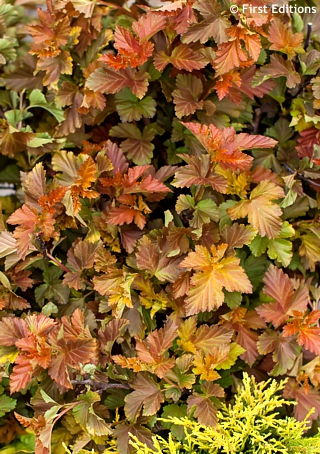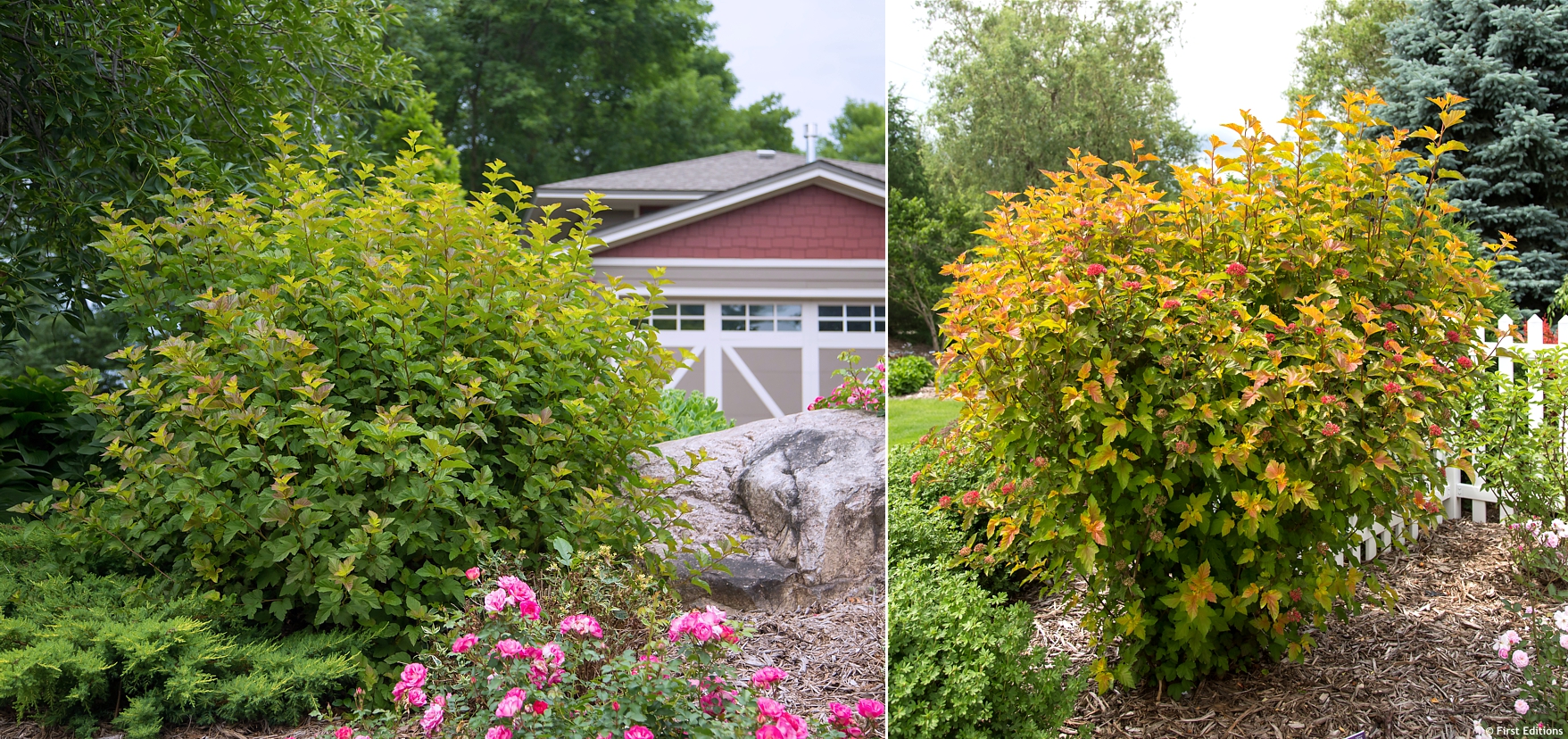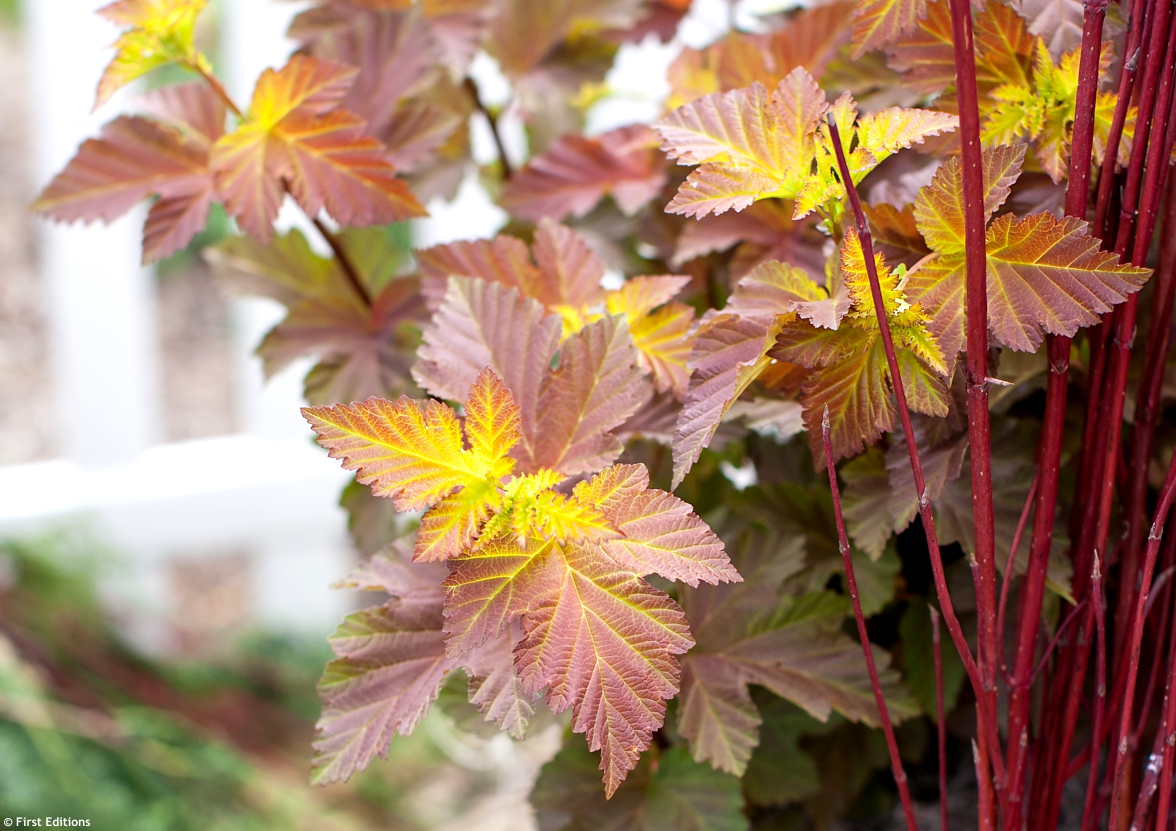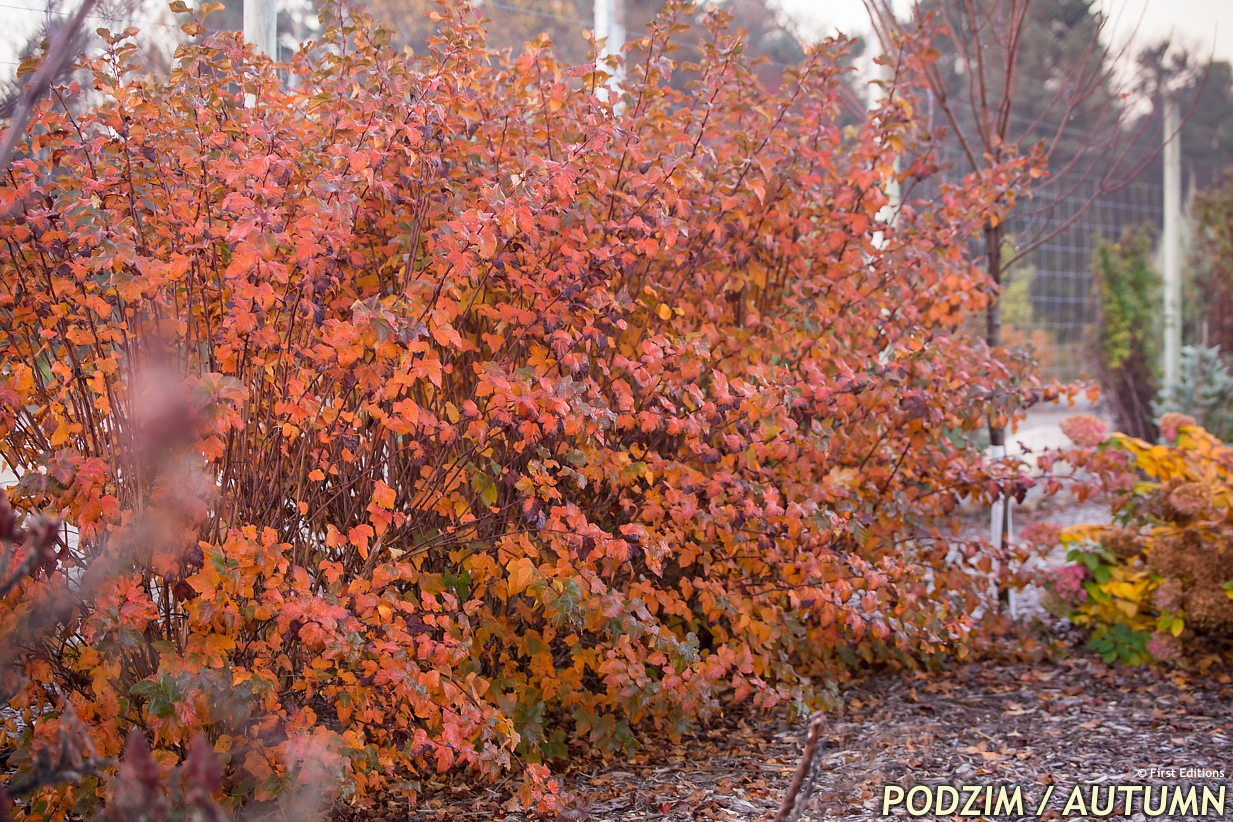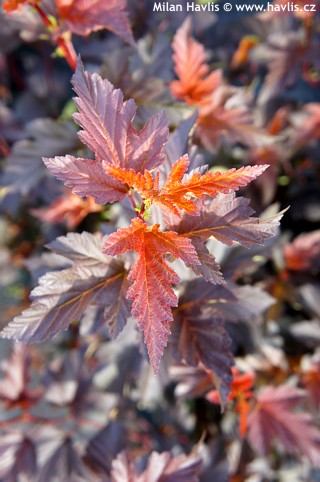Physocarpus opulifolius 'Jefam' AMBER JUBILEE™ common ninebark


Physocarpus
Ninebark is a low-maintenance, deciduous shrub, available in several varieties offering several leaf colours and habits. In the new millennium there has been a number of new selections found as natural mutations, or crossings which enriched the range of these popular hedging plants.AMBER JUBILEE™ is a fantastically coloured ninebark developed by James R. Durand at Jeffries Nurseries in Canada, crossbreeding two older varieties: DIABOLO® with dark maroon foliage and Dart’s Gold with bright yellow and chartreuse leaves. It was first introduced in 2010 and granted the following plant patents: PP23177 (USA - 2012), 38508 (Europe - 2014) and 4765 (Canada - 2014).
The leaves are deciduous, serrated at margins, divided into three lobes like those of Amur maple, and slightly 3D – not flat. Twigs are orange to brown from spring till autumn. In late spring appear numerous small corymbs composed of white, melliferous flowers that are soon followed by bright pink-red fruits that last for several months and look like tiny jewels. AMBER JUBILEE™ ninebark grows fast and, thanks to its upright stems, forms symmetrical and extremely dense bushes. Its height and width varies between 1.5 and 2 meters.
In autumn the shrub shows another handsome feature which gave this plant its name ninebark: peeling-off bark in strips on older stems. It looks especially attractive on a sunny winter day against a background of fresh snow. Dark-coloured varieties provide the best contrast in hedges with yellow- or light-green-leaved shrubs and vice versa. Ninebarks combine well with other deciduous broadleaved shrubs producing coloured foliage or flowers such as weigelas, viburnums, etc. These colourful hedges and screens may not be suited to all types of landscape so consider your project wisely as to whether you really want a firework of colours rather than a subtle setting with plants of one type or one colour only.
Ninebarks are so easy to grow. They take any soil, pH and location. The root system is so sturdy it can easily grow through heavy clay that will provide nutrients for a fantastic plant. They even cope well with compacted ground that tends to get waterlogged after the rain. On the contrary, once established they do not require extra watering and sit still until the next rain. Location in full sun will enhance the leaf colour and shrub uniformity. Pruning is a key to the best-looking plants as it ensures regular rejuvenation: prune back 60-80% of all branches every other year after the flowers have set fruits. Best done in early spring before the plant wakes up, or any time during winter but you will lose the sight of peeling-off trunks. Fully hardy to about -45°C (USDA zone 2), and suitable for outdoor pots.
Last update 31-10-2023
Goods are shipped all over Europe. For Russia and U.K. and for further details please read about SHIPPING OPTIONS HERE.
Are you interested in a serious discount for orders NOV-FEB? Check your options here.
THE PRICES INCLUDE VAT of 15%. For quick conversion you can use 1 CZK = approx. 0.04 EUR
- STANDARD QUALITY - Plants of this group are 1st class quality with number of branches and overall density adequate to their size and age, considering they were container grown.
- DE LUXE QUALITY - This label guarantees a luxurious quality of manually selected plants that, compared to their height and age, are exceptionally dense and beautiful.
- EXTRA - These plants are usually mature and bigger specimens with exceptional overall appearance.
- STANDARD (as described in the plant form) means a tree with a trunk of 190-210 cm and a crown at the top, unless specified differently. The commercial size for trees is their girth measured in the height of 1m from ground.
- HOBBY - These plants are of the same quality as our standard-quality plants but younger and therefore cheaper.
- SHRUB - a woody plant with branches growing bushy from the ground level.
- HALF-STANDARD or MINI-STANDARD - a small tree with shorter trunk, its size is usually specified.
- FEATHERED - These are trees with branches growing already from the base of the trunk and up along the stem.
- GRASSES and PERENNIALS - Sizes given usually read the diameter of the pot or the clump, as specified.












